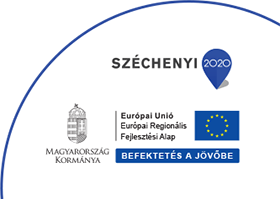Mártély Landscape Protection Area
Area: 2260 ha
Legal declaration by Decree No. 390/1971. OTvH
Biogeographic region: Lower Tisza region
This is the third oldest landscape protection area of Hungary. It is located in the Tiszántúl region, on the left hand side floodplain of Tisza. The environmental conditions and the wildlife of the area have always been determined by the water level of Tisza. The most valuable parts of the area are the Island of Körtvélyes, Körtvélyes Backwater, Solti-lapos, Barci Meadow and the soil pits excavated during the construction of embankments. Owing to the frequent inundations and the slow retraction of water, there are not many protected plants here. After the river regulations, areas detached from the floodplain have become forested, either by natural vegetation development or by afforestation. Small groves of 80-100 years old poplars and willows may look natural but they were planted after the river regulations in order to control floods. Nevertheless, their protection is important as they contribute to the landscape value and are important habitats for insects, hole-dwelling birds and bats. Water Chestnut is very abundant in the backwaters and can form a green carpet on the water together with Floating Fern. Shady forest edges are the habitats of Summer Snowflake and Epipactis tallosii, while the meadows are home to Autumn Ox-Eye Daisy.
Owing to the mosaic arrangement and diversity of habitats, the fauna of the landscape protection area is also rich and diverse. As the spring flood waters get warm, they become busy with flocks of spawning carps and chubs. Newly hatched fries make an abundant food source for nearby heron colonies and migrating fish-eating birds. In mid-June, lucky visitors can experience the mating flight of mayflowers, also known as the “Blooming of Tisza”.
The main zoological value of Mártély is its rich birdlife. A total of 245 bird species have been recorded here; the number of breeding birds is 112. Thus, the area has been listed among the wetlands of international importance under the Ramsar Convention since 1979. Birds commute in large numbers between Mártély and neighbouring wetlands, such as Lake Fehér near Szeged, Lake Csaj or Lake Fehér near Kardoskút. These movements of birds are influenced by the water level of the floodplain and hence the amount of food, and the disturbance related to human activities. In summer, masses of fish fries get trapped, attracting herons and egrets from far. The migration of Black Storks is a spectacular event here in the end of August. They look for fish in the swamps and voles, mice and locusts in the meadows in mixed flocks with White Storks, Egrets and Spoonbills. The floodplain hosts one of the largest gatherings of birds in the southern part of the Hungarian Great Plain during floods and when nearby fishponds get frozen. Occasionally, up to 20,000 water birds gather together in the inundated floodplain and the Tisza River.
Forty mammal species have been recorded in the area; the most important ones are the Otter, Wild Cat and Bats. The latter group strives in the area due to the rich insect fauna and the abundance of holes in old trees.
The Mártély Backwater is an important recreational area, where visitors can get in touch with the natural values of the area. Mártély is a popular working area for fine artists, and is also famous for historic values. It is not only an “open-air exhibition” of river regulations, but archaeological sites are also abundant in the area with artefacts dating back to Neolithic, Bronze, Sarmatian and Avar Ages and the time of the Hungarian conquest of the Carpathian Basin.


